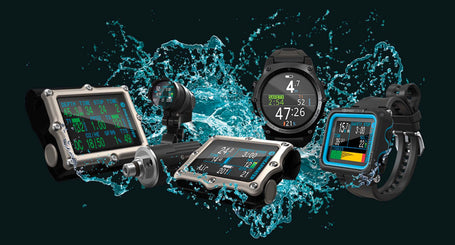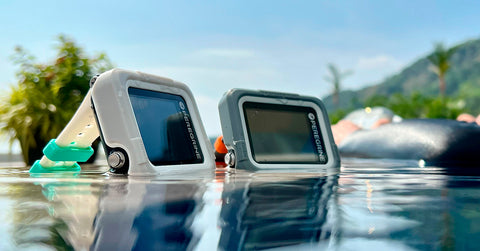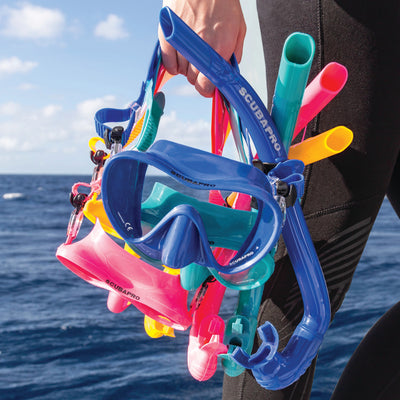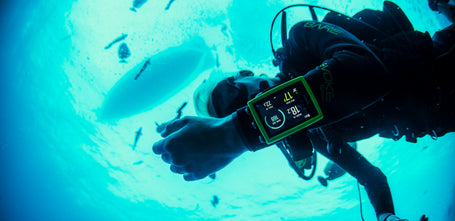Best Scuba Diving Destinations
Diving into the depths of the world’s oceans offers an unparalleled adventure, where vibrant coral reefs, bustling marine ecosystems, and awe-inspiring underwater landscapes await. As the 2025 travel season approaches, divers are preparing to explore both warm, tropical paradises and cool, nutrient-rich waters teeming with life. Whether you're an experienced diver looking for a challenge or a beginner eager to explore, there’s a destination for you.
In this blog, we’ll highlight some of the best scuba diving destinations for 2025, each offering unique underwater experiences. From the warm, crystal-clear waters of Beqa Lagoon in Fiji to the stunning biodiversity of Wakatobi in Indonesia, we'll showcase some of the best locations for your next dive. We’ll also explore cold-water hotspots like the Galápagos Islands and Catalina Island, where fascinating marine life and dramatic underwater environments await. Whether you prefer to stay local or travel abroad, these destinations promise unforgettable adventures beneath the waves. Ready to dive in? Let’s begin!
Best Scuba Diving Destinations 2025
1. Beqa Island, Fiji
Beqa Island is a top choice in scuba diving destinations, renowned for its rich marine life and crystal-clear waters. Known as the Soft Coral Capital of the world, Fiji boasts dramatic drop-offs and vibrant underwater biodiversity, making it an exceptional location for divers. Beqa offers thrilling shark dives, where you can encounter bull sharks, tiger sharks, and other fascinating species in their natural habitat. The Cathedral Shark dive is widely know as one of the best in the world.
Join Santa Barbara Aquatics this September on a memorable trip to Beqa Lagoon Resort. The itinerary includes boat and shore dives, plus activities like kayaking, hiking, and paddleboarding. A 2-tank shark dive experience is also included, allowing you to get up close with some of the ocean’s most awe-inspiring predators. Your all-inclusive package covers airfare, transfers, accommodations, meals, and entertainment. Plus, the resort is the perfect place to relax and unwind after the excitement of your activities. It’s the perfect mix of adventure, community, and eco-tourism, with a focus on sustainable dive operations and conservation efforts.
2. Wakatobi, Indonesia
Located in the heart of Indonesia’s Coral Triangle, Wakatobi Resort is a luxury diving destination offering unparalleled marine biodiversity and pristine reefs. It’s considered one of the most biodiverse dive destinations in the world, with year-round perfect conditions for exploring vibrant coral gardens and rare marine life.
Looking to plan ahead for next year? Join Santa Barbara Aquatics for an unforgettable trip to Wakatobi in May 2026. Over six days, you’ll have unlimited access to Wakatobi's incredible dive sites and enjoy the resort’s luxurious amenities. Spacious accommodations, gourmet meals, and daily turndown service will ensure a comfortable and relaxing stay. On the final day, a Village Tour offers a glimpse into the local culture. Wakatobi is a must-visit destination for any avid diver seeking the perfect blend of relaxation, luxury, and world-class diving.
3. Little Cayman, Cayman Islands
Little Cayman, part of the Cayman Islands, is a hidden gem known for its pristine dive sites, crystal-clear waters, and abundant marine life. The island offers excellent visibility and some of the most sought-after diving experiences in the world, including the iconic Bloody Bay Wall—famous for its vibrant corals, sponges, and diverse marine life.
Whether you're an experienced diver or just starting out, Little Cayman offers a rich and diverse underwater ecosystem to explore. From colorful reef fish and graceful sea turtles to majestic stingrays and elusive sharks, the waters around Little Cayman promise an unforgettable diving experience in one of the Caribbean’s best-kept secrets.
4. Galápagos Islands, Ecuador
The Galápagos Islands are a dream destination for scuba divers, offering the chance to explore some of the world’s most diverse marine life. The islands are home to unique species such as hammerhead sharks, whale sharks, and manta rays, and feature world-class dive sites like Wolf and Darwin Islands, where divers can encounter large pelagic species.
The islands also emphasize marine conservation, ensuring the protection of their pristine ecosystems. Strict diving regulations and minimal tourism allow divers to enjoy responsible, sustainable experiences in one of the world’s most biodiverse regions. The Galápagos Islands offer an unparalleled opportunity to dive in a place where wildlife and underwater landscapes are as extraordinary as the diving itself.
5. Santa Catalina Island, California
Catalina Island, off the coast of Southern California, is a top scuba diving destination known for its clear waters, vibrant marine life, and rich underwater ecosystems. Famous dive sites like the "Casino Point" marine park offer opportunities to explore kelp forests, encounter sea lions, and spot colorful Garibaldi fish. Catalina’s diverse dive environments make it an ideal spot for divers of all levels.
Catalina also offers plenty of activities beyond diving. Choose from camping under the stars or staying in one of the island's cozy hotels. After a day of diving, explore charming restaurants offering fresh seafood and local specialties. For those seeking land-based adventure, Catalina offers hiking, biking, and zip-lining. It’s the perfect blend of underwater exploration and scenic beauty, making it an ideal destination for both relaxation and adventure.
Time to Dive In: Your Next Scuba Adventure Starts Here!
With so many incredible diving destinations to choose from, there’s sure to be one that meets all your adventure needs. Whether you prefer warm, tropical waters or the unique allure of colder dive sites, now is the time to start planning your next trip. And when you're ready to go, make sure to check out our blog post about packing up your gear!
As the travel season nears, take the opportunity to secure your spot for 2025 or even look ahead to next year. The world of scuba offers endless possibilities, from vibrant coral reefs to mysterious underwater ecosystems. If you’re interested in joining us on our upcoming trips to Beqa Lagoon or Wakatobi, we encourage you to reach out today. Let’s make your next diving adventure one to remember.


























































